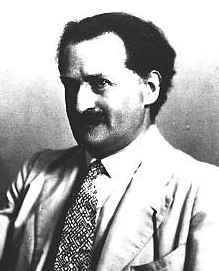| Profile | Major Works | Resources |
Emil Lederer, 1882-1939.

Although educated at the University of Vienna, in the same cohort as Ludwig von Mises and Joseph Schumpeter, Emil Lederer was nonetheless not a member of the Austrian School. Indeed, influenced by Rudolf Hilferding, Lederer can be considered one of the last members of the "Austro-Marxists". However, he differed substantially from them on several crucial aspects. The first was the importance Lederer gave to the rise of the "white-collar" service class (1912), which he believed implied substantial modifications in standard Marxian theory. His second point of difference was on the theory of crisis. Lederer argued (1927) that the concentration of capital was actually a destabilizing feature for capitalism. More specifically, in his work on structural growth theory (e.g. 1931), he insisted on the importance of technological change as the source of unemployment, putting him closer to Tugan-Baranovsky than the old "underconsumptionist" Marxians. His work also put him in touch with the approach being developed by Adolph Lowe and the Kiel Institute group.
Lederer was also active in Social Democratic circles in both Austria and Germany. After the First World War, Lederer was a member of the German Socialization Committee under Hilferding and Kautsky in Berlin, where he was soon joined by Adolph Lowe, Eduard Heimann and his old Vienna classmate, Joseph Schumpeter. Lederer's rise in academia continued apace: Lederer became a professor of economics at Heidelberg (assistant in 1918, full from 1920). In 1931, Lederer became professor at the powerful University of Berlin, succeeding to the chair of Werner Sombart. He counted Hans Speier and Jacob Marschak among his assistants.
This was all cut short by the Nazi rise to power. Emil Lederer proved instrumental in helping the flow of intellectual refugees out of Germany and to the United States - particularly to the New School for Social Research. Lederer eventually joined the New School himself and became a dean of the Graduate Faculty until his death in 1939.
|
Major works of Emil Lederer
|
|
HET
|
|
Resources on Emil Lederer
|
All rights reserved, Gonçalo L. Fonseca
